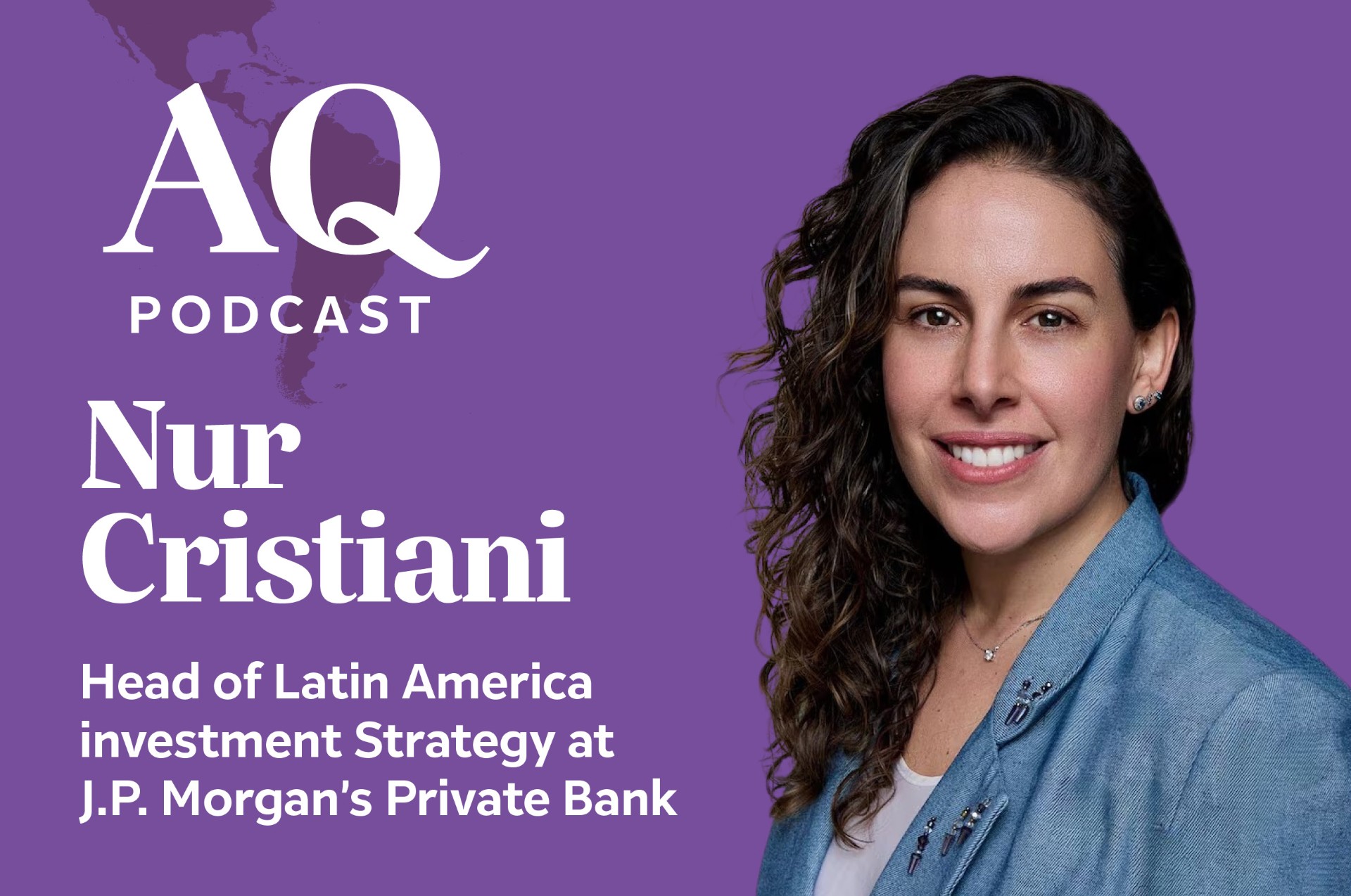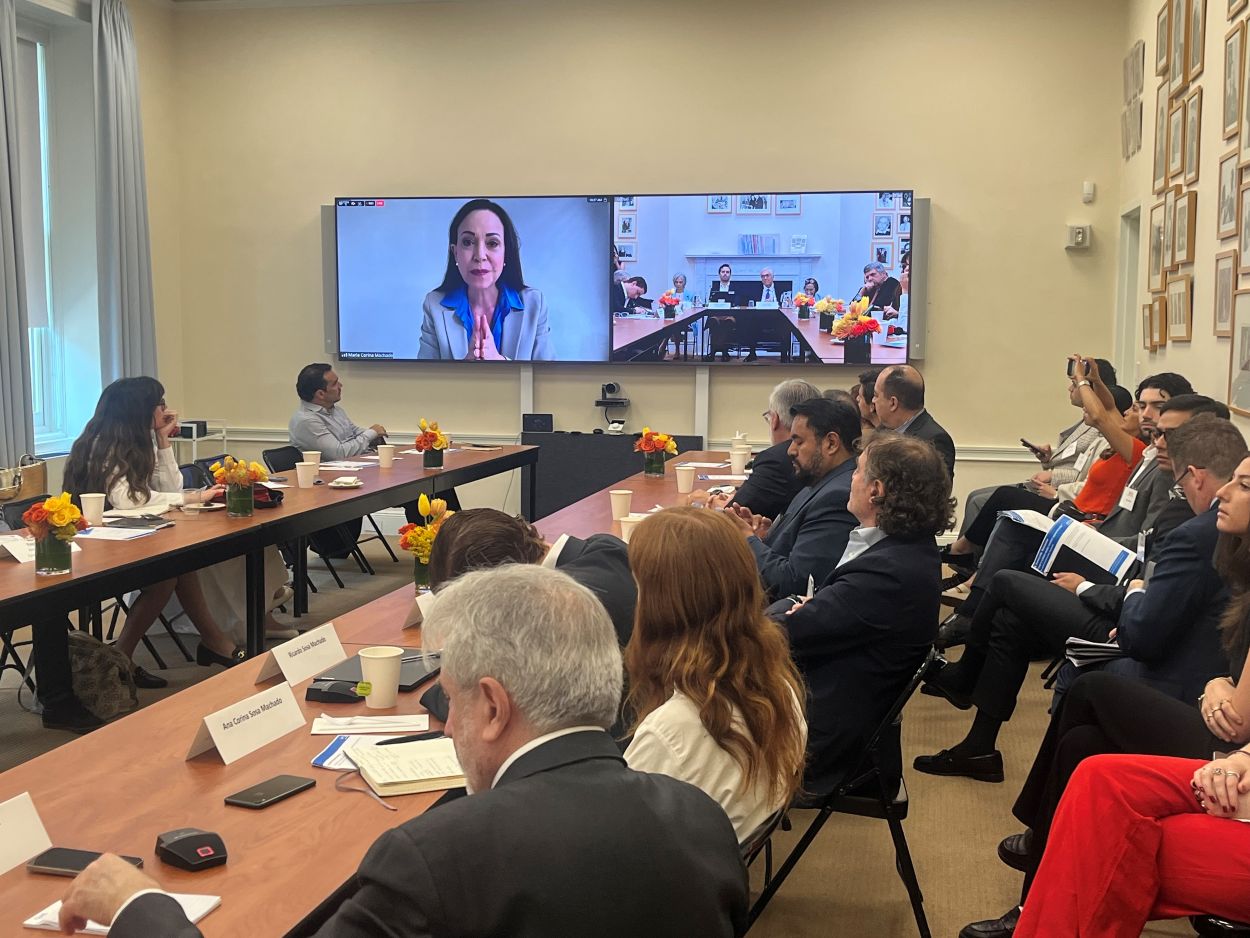Explainer: What Is the Pacto por México?
Explainer: What Is the Pacto por México?
A group of 95 initiatives, this agreement between Mexico's three main political parties seeks a series of reforms, ranging from energy to education to telecommunications.
The Pacto por México is an agreement inked by Mexico’s three main political parties on December 2, 2012—a day after President Enrique Peña Nieto’s inauguration. The pact consists of 95 initiatives agreed upon by the governing Institutional Revolutionary Party (PRI), the National Action Party (PAN), and the Party of the Democratic Revolution (PRD). The signatories representing the three parties were President Enrique Peña Nieto, Interim President of the PRI Cristina Díaz Salazar, President of the PAN Gustavo Madero, and President of the PRD Jesús Zambrano. The governors of Mexico’s 31 states, the head of Mexico City’s government, and the presidents of the upper and lower houses of Congress attended the signing ceremony. On January 28, the Green Party also signed on to the Pacto por México—or Pact for Mexico.
With support from all levels and branches of government and across the political spectrum, the agreement seeks to accomplish reforms that have been obstructed by political gridlock since the administration of President Ernesto Zedillo (1994-2000). José Ángel Gurría, current head of the OECD, suggested that Mexico has the capacity to see GDP growth at a rate of 6 percent if the pact’s reforms gain passage.
Background: How the Pacto Came into Being
When the July 2012 presidential and legislative election concluded, the leaders of the three main parties and the president-elect began meeting to discuss the next government’s agenda. Initially, these meeting took place between two of the three parties at a time. But at the beginning of October, the three main parties realized that trilateral talks would be much more valuable.
Enter José Murat, ex-PRI governor of Oaxaca. His house in Mexico City was suggested—and accepted—as a clandestine place to conduct trilateral talks. In these meetings, future Finance Secretary Luis Videgaray and future Interior Secretary Osorio Chong represented the PRI, as well the presidential transition team. The current and former PRD presidents, Zambrano and Jesús Ortega respectively, represented their party. The PAN’s Madero and former Secretary of the Interior Santiago Creel represented the PAN. Murat served as host and facilitator.
There were several motivations for the three parties to come together. The PRD wanted to avoid being marginalized by a PAN-PRI alliance built on the ideological convergences of the two parties. Indeed, during the electoral cycle, Peña Nieto and PAN presidential candidate Josefina Vázquez Mota agreed on structural reforms, such as in the fields of energy and education, which later appeared in the pact. The PRD was able to win incorporation of the expansion of various “social rights” into the pact. Meanwhile, the PAN wavered over whether to ally with the PRI—as it did in 1988—or with the PRD, as in 1996. At the same time, the PRI did not want to squander its first presidency in 12 years by facing a united PAN-PRD opposition.
The pact is said to have taken inspiration from Spain’s Pacto de la Moncloa, or Moncloa Pact, which united political forces in post-Franco Spain in 1977. Unlike the Moncloa Pact, the Pact for Mexico is not a response to economic crisis. But like the Moncloa Pact, the agreement drew together disparate political forces to break through gridlock.
Composition: What Are the Pact’s Goals and Who Carries Them out?
The pact has three central axes: the strengthening of the Mexican state; political and economic democratization; and the application and expansion of social rights. The 95 initiatives fall within five categories:
- Democratic governance
- Transparency, accountability, and combating corruption
- Rights and liberties
- Security and justice
- Economic growth, employment, and competitiveness.
A governing council oversees negotiations, creating working groups as well as laws to be submitted to Congress. This council consists of representatives from each of the three major parties and representatives from Peña Nieto’s cabinet. Murat serves as executive coordinator, and the presidency will be rotated monthly among the three national party leaders. The current president is the PAN’s Madero.
In addition, a committee in charge of technical coordination of the pact is responsible for following up on the agreements of the governing council and working groups. It is also tasked with sharing communication with the public about progress and achievements gained via the pact. This body includes a representative from each of the following: the presidency, the PAN, the PRI, and the PRD.
The pact’s coordinators also intend to involve stakeholders from civil society during key points in the pact’s passage.
Agenda: What Are Top Reforms Included in the Pact?
The Pacto seeks to confront inertia that has plagued Mexico politically and economically for many years. Many of the more high-profile reforms—such as the energy, fiscal, and telecommunications reforms—are scheduled for this year. But, according to the document, the pact’s reforms must be accomplished by the second semester of 2018—the end of Peña Nieto’s sexenio. Core reforms that fall under the pact’s umbrella are as follows:
Education Reform: A major achievement already accomplished involves an education overhaul. Mexico boasts one of the worst public education systems in the OECD. The reform seeks to return control of the country’s public education back to the State and out of the hands of unions. The reform will create an autonomous National Institute for Education Evaluation, which will professionalize teachers through the oversight of their performance, thereby ending the inheritance of, sale of, and lifetime hold on teaching positions. In addition, the National Statistic and Geography Institute will conduct a census to accurately detail how many schools, teachers, and students exist within Mexico’s public education system. (It’s suspected there are thousands of phantom teachers on payroll.) The law was ratified in January as a constitutional reform and signed by the president on February 25, 2013.
Energy Reform: Once undertaken, energy and fiscal reforms could potentially transform Petróleos Mexicanos (PEMEX) and boost its capacity to compete globally. Mexico’s hydrocarbon resources will remain property of the Mexican state so a third-rail constitutional reform will not be necessary. But competition will be increased in refining, petrochemicals, and hydrocarbon transport. Lastly, PEMEX will seek to be an integral part of the fight against climate change. The PRI has placed an emphasis on modernization over privatization.
Comprehensive Fiscal Reform: This reform is closely tied to the energy reform. Mexico’s federal government receives up to 40 percent of its revenue from PEMEX, according to some estimates. Comprehensive fiscal reform would seek to reduce the government’s dependency on PEMEX revenues, allowing for the state firm to invest its funds more productively. The reform would also eliminate “fiscal consolidation,” which permits Mexican companies to offset the losses of subsidiaries against the profits of other subsidiaries, in turn allowing companies to avoid paying taxes.
The reform would also expand the revenue base by attempting to formalize Mexico’s informal sector and by better regulating local taxation. Subsidies that disproportionally benefit the wealthy, such as some agrarian and energy subsidies, will be eliminated. Finally, the reform aims to simplify and improve the tax code. Levying a value-added tax on food and medicine has been suggested, but is politically sensitive due to the impact it could have on the poor. Comprehensive fiscal reform is crucial not just to the energy reform but to much of the rest of the pact, as 46 of the 95 initiatives depend on this reform to be viable.
Social Security Reform: Changes will consist of expansion of social safety nets, including universal access and standardization of social security services, a pension for adults older than 65, unemployment insurance, and life insurance for heads of households.
Accountability, Transparency, and Corruption: The federal government will create a National Anti-Corruption Commission. The Federal Institute for Access to Public Information and Data Protection will be given greater autonomy and its powers will be expanded.
Security Reform: The crux of the pact’s security reform involves the creation of a national gendarmerie—a police force with additional military training—that will respond to requests from local governments. There are already 10,000 being trained for the force. There will also be a restructuring of state and local police forces so that their responsibilities are firmly delineated and to create standardization across the security apparatus.
Political Reform: Running from the beginning of July to the beginning of December, Mexico has one of the longest periods of time in the world between when presidents are elected and take office. The pact proposes new presidents take office on September 15. In Mexico, legislators cannot seek reelection, which the pact will also seek to change. The pact also proposes to have one national body oversee and organize all elections, not just federal elections, as is the case currently under the purview of the Federal Electoral Institute.
Telecommunications Reform: Trilateral legislation for this reform was submitted to Congress on March 11, 2013. With an eye on improving competition in this field, more licenses will be given for non-cable television channels. Dominant telephony firms will be regulated so as to ensure greater competition. This will be done through an expansion of the Federal Competitiveness Commission’s capacities, including an improved ability to level sanctions against dominant market players. Further, the Commission will be given greater autonomy and decision-taking power. Finally, the Constitution will be changed to reflect access to broadband as a right.
Obstacles ahead
According to PRI leadership, the pact will tackle comprehensive fiscal and energy reforms in the second half of 2013. In order to accomplish fiscal reform, Peña Nieto’s PRI will first have to change the party’s internal document from one that won’t accept extending a value-added tax (VAT) to food or medicine. Afterwards will come the harder part of having the PRD accept this new VAT. The PRD’s Zambrano has stated that the food and medicine VAT is not a priority, but rather that “tax loopholes and stopping evasion are.”
Another hurdle for the pact stakeholders will be the possibility that July 2013 state and local elections in 14 states could re-politicize the national panorama. If the PAN loses the Baja California governorship, the PAN’s Madero—integral to the process thus far—could be ousted from the party’s presidency. Meanwhile, PRD leadership risks alienating party militants over hot-button issues, such as energy reform and food and medicine taxes. Already, two PRD congressmen left the party congressional bloc a day after the pact’s signing, opting to represent the Morena party of former presidential candidate Andrés Manuel López Obrador’s Morena.
Learn More:
- See the Mexican Constitution (English).
- Review the Pacto por México (en espanol).








